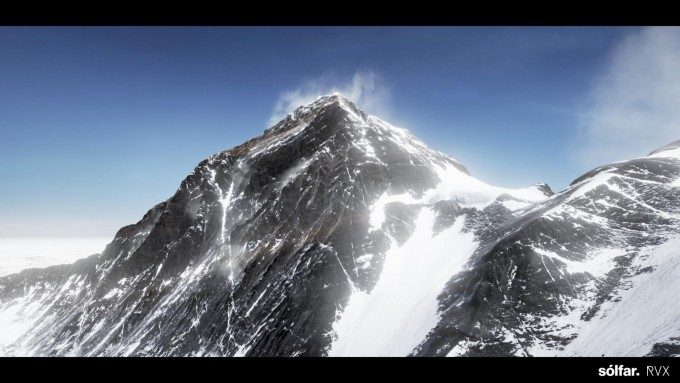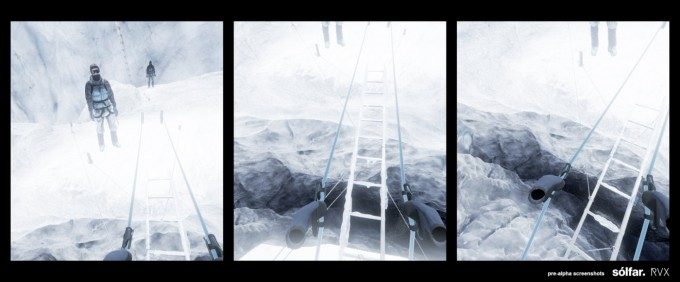Frank He continues his VRLA Winter Expo adventures as he goes hands on with Everest VR, a HTC Vive powered experience from Sólfar Studios and RVX, that blends beautiful visuals with informative narration to present a compelling, interactive VR documentary.
Guest Article by Frank He
Now a second year UCLA undergraduate in a neuroscience program, Frank was born in Los Angeles and then raised in Canada, spending his high school years across the border in New York. His main interest is in technologies that enable immersive experiences, and Frank’s academic path is towards better understanding the brain, how it works, and then enabling us to do something for the betterment of life through that knowledge. Besides studying, Frank makes efforts towards supporting the VR community locally and online, where he regularly participates in discussions about VR.

At this year’s VRLA Winter Expo, Nvidia was doing HTC Vive Pre demos, with a catalog of content you could try. Having tried the majority of experiences on offer, I picked Everest VR, an experience built by Sólfar Studios and RVX and aims to bring the majesty and scale of one of the world’s wonders to virtual reality, and then lets you climb all over it.
Straight off the bat, let me say that it was beautiful! The power of seeing photo-scanned objects and environment taken from real life, in VR, can not be underestimated. Not to mention well designed art in general. The view distance seemed to be very high, and the horizon dotted with mountains and snow was a sight to behold. This actually reinforced my bullishness on good graphics in VR, even though you don’t necessarily need it in every application.
In some ways, this experience could be compared to The Climb, but it is different because it’s not designed to be a game. It was more like an linear documentary that you travel through, as both a participant and an audience member. There would be parts where it’s like you’re in a dark theater, and the screen is actually not a screen, but a cutout where the other side is another world. And it’s even cooler when you can actually get different perspectives by moving around, just like you would in real life. Imagine a window in your house, and looking through that window, except instead of your lawn, you see Mount Everest. Mount Everest is now your lawn.
And of course, this also helps with locomotion, as the constrained view limits the amount of motion you feel. Then the “window” opens up, and you’re fully transported into the scene. They tried a lot of locomotion and transitional techniques in this demo. At some points, you were actually fully flying through the scene, but very gently. To me, there was no problem with that, as I don’t find that slow way of moving uncomfortable. They had teleportation. They had physical walking, which you get with large room scale. They had this thing where you’re looking down at a diorama sized version of the map, and you can “zoom” in and make things bigger, until you’re ‘there’ at a 1:1 scale. And finally, they had a part where you climb a ladder, and you use your motion controllers to grasp at rungs and sort of pull yourself up. Through all of these different methods, I experienced no motion sickness.
Another memorable part of the experience was where I had to cross a crevice over a ladder. During this segment, I felt as if I was losing my balance, not because the heights intimidated me, but because I couldn’t see my legs. That coupled with the mismatch in physical sensation from the real world (I was on a solid floor not a ladder) didn’t provide an entirely solid base for my brain to reconcile how my body was being balanced in the world. This may or may not be something common among the population. I’m speaking from anecdotal evidence, but it does seems that my brain relies a bit more than other people on visual proprioceptive cues for balancing. I’ve experienced this in other VR scenarios before as well.
In any case, it was still very fun to see and do all those different parts of the experience. I felt that the developers blended everything very well, feeling more cohesive than just a bunch of tech demos strung together. It felt like a complete narrative experience that integrated each section meaningfully. From hearing the narrator in a dark void-like theater, to climbing and teleporting across the mountains. I think this really is currently the next best thing to visiting the location in real life. Everest VR stands as one of my all time favorite VR experiences, although – as evidenced by my time at VRLA and as Virtual Reality experiences mature – that list is getting longer.









